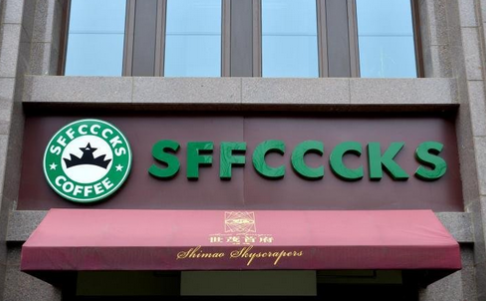Risks surrounding the looming release of the latest jobs report by the BLS later on in the session failed to weigh on sentiment and heading into the North American open, stocks in Europe are seen higher across the board. The SMI index in Switzerland outperformed its peers since the get-go, with Swatch Group trading up over 3% after the company said that it expects good results for 2013 at operating profit and net income level. At the same time, in spite of stocks trading in the green, Bunds remained better bid, with peripheral bond yield spreads wider as market participants booked profits following the aggressive tightening observed earlier in the week amid solid Spanish bond auctions, as well as syndications by Ireland and Portugal. Fake Chinese trade data failed to boost Chinese stocks, which dropped anoter 0.7% and is just 13 points above 2000 as Shanghai remains one of the world’s worst performing markets since the financial crisis. The yoyoing Nikkei was largely unchanged. All eyes today will be fixed on the headline streamer at 8:30 when the latest nonfarm payrolls report is released.
Looking at today’s calendar, outside of payrolls, we get industrial production updates from Spain, France and the UK, as well as German retail sales (all for the month of November). Wholesale inventories and the IBD/TIPP Economic Optimism survey round out the week’s data docket. The Fed’s Lacker and Bullard speak on the economy today.
US event docket:
- NFP, cons +195K; unemployment rate 7.0% (14:30)
- Fed speakers Lacker (14:45); Bullard (19:00)
- POMO:
$2.50 – $3.50 billion in 10/31/2019 – 12/31/2020 bucket
Overnight headline bulletin
- European stocks traded higher this morning despite the upcoming jobs report from the US
- Widening peripheral spreads have seen a bid tone for Bunds as participants look to book profits
- Treasuries steady, 10Y yield little changed before report forecast to show U.S. economy added 197k jobs in Dec. while unemployment rate held at 7.0%.
- Numerous firms have raised payrolls forecast after better than expected ADP report on Jan. 9; traders’ view is for at least 225k, according to FTN’s Jim Vogel
- Lenders are poised to win concessions from central bank chiefs and global regulators over a debt limit they criticized as a blunt instrument that would penalize low-risk activities and curtail lending
- China’s imports rose 8.3% in Dec., the most in five months; exports rose 4.3%, a pace that may be distorted by fake invoices. The trade surplus was $25.6b
- The U.S. and Philippines criticized China for threatening stability in the South China Sea after it introduced fishing rules requiring foreign vessels to seek permission before entering waters off its southern coast
- U.K. industrial output was unchanged in Nov. vs forecasts for an increase of 0.4%
- Most uninsured people in the U.S. have yet to try to sign up for Obamacare, and a key advocacy group said it will hire more workers to reach those unfamiliar with the law
- Sovereign yields mostly lower; EU peripheral spreads widen. Nikkei little changed, Shanghai Composite falls 0.8%. European stocks gain, U.S. equity-index futures rise. WTI crude, gold and copper gain
Asian Headlines
Chinese Trade Balance (USD) (Dec) M/M 25.64bln vs. Exp. 32.15bln (Prev. 33.80bln)
– Chinese Exports (Dec) Y/Y 4.3% vs. Exp. 5.0% (Prev. 12.7%)
– Chinese Imports (Dec) Y/Y 8.3% vs. Exp. 5.0% (Prev. 5.3%)
The PBOC have reiterated their prudent monetary policy and said they are to maintain appropriate growth in credit and social financing.
EU & UK Headlines
UK Industrial Production (Nov) M/M 0.0% vs Exp. 0.4% (Prev. 0.4%, Rev. 0.3%) – Production hit by fall in gas output.
– UK Industrial Production (Nov) Y/Y 2.5% vs Exp. 3.0% (Prev. 3.2%)
UK Manufacturing Production (Nov) M/M 0.0% vs. Exp. 0.4% (Prev. 0.4%, Rev. to 0.2%)
– UK Manufacturing Production (Nov) Y/Y 2.8% vs. Exp. 3.3% (Prev. 2.7%, Rev. to 2.6%)
UK Construction Output SA (Nov) M/M -4.0% vs. Exp. 0.8% (Prev. 2.2%, Rev. to 2.0%) – largest fall since June 2012
UK Construction Output SA (Nov) Y/Y 2.2% vs. Exp. 7.5% (Prev. 5.3%, Rev. to 5.1%)
French Industrial Production (Nov) M/M 1.3% vs Exp. 0.4% (Prev. -0.3%, Rev. -0.5%)
– French Industrial Production (Nov) Y/Y 1.5% vs Exp. 0.9% (Prev. 0.0%, Rev. -0.3%)
– French Manufacturing Production (Nov) M/M 0.2% vs Exp. 0.2% (Prev. 0.4%, Rev. 0.3%)
– French Manufacturing Production (Nov) Y/Y 1.6% vs Exp. 1.5% (Prev. 0.7%, Rev. 0.5%)
S&P affirmed Germany at AAA/A-1+; outlook stable citing steady growth. S&P added that the German economy will grow steady over the medium term, averaging above 1.5% real GDP per capita growth 2014-2016.
The ECB have said banks are to repay EUR 2.566bln in 3y LTRO loans and repay EUR 0.98bln in 1st 3y LTRO op and EUR 1.586bln in 2nd 3y LTRO op.
The ECB said some member states provided incomplete information according to an ECB Q&A document on the ECB’s role on the Troika.
US Headlines
Fed Chairman Bernanke offered an optimistic view on the US economy’s prospects in a lunch with Senators yesterday, according to Senator Carper.
Fed’s Williams (Non-voter, dove) forecasts growing upside risks to economy and sees economic growth picking up to more than 3% in 2014 and 2015.
Fed’s Kocherlakota (Non-voter, dove) said the Fed could do better by adopting a more accommodative monetary policy stance.
Equities
European stocks traded higher throughout the session, with health care related stocks outperforming after UBS added Novartis, Roche and AstraZeneca to its most preferred list. As a result, pharma heavy SMI index outperformed its peers, with Swatch Group also trading sharply higher after the company said that it expects good results for 2013 at operating profit and net income level.
After-market yesterday Alcoa kicked-off the US earnings season by reporting Q4 Adj. EPS USD 0.04 vs. Exp. USD 0.06. Q4 revenue USD 5.585bln vs. Exp. USD 5.34bln. Co. shares are seen down 5.6% pre-market.
Also after-market Chevron said they see Q4 earnings comparable to Q3.
FX
The release of weaker than expected macroeconomic data from the UK ensured that GBP underperformed its peers, with GBP/USD falling below moving below its 21DMA line as a result. A combination of a firmer USD and risk-on sentiment, supported USD/JPY. However, touted offers by an Asian central bank prevented the pair from making a break above the key psychological 105.00 level.
Commodities
India’s December gold and silver imports down 68.83% Y/Y at USD 1.77bln. It has also been reported that India’s Finance Ministry is to decide on easing gold import curbs.
Shanghai Gold Exchange will set up an international board in the Shanghai free-trade zone in the first half of this year to attract overseas investment in gold.
China boosted net crude imports to a record high last month as two new refineries prepared to begin operations.
China are to cut diesel price by CNY 120/ton.
Iran and world powers meet for the second day in Geneva today, so we remain vigilant for any respective updates.
* * *
In conclusion, here is Jim Reid’s overnight event recap
So here we go again. Another payroll Friday is upon us. Our US economists are going for a consensus busting +250k on nonfarm payrolls and 6.8% on the unemployment rate (street at 197k and 7.0% although some may not have adjusted post the strong ADP). They note that weather can often play a part this time of year so any big deviation from forecasts first needs to be checked off against those workers who could not work or worked reduced hours due to inclement weather. Equity markets continue to be a bit on the soft side this year (albeit in only a week of trading) which in part is due to fears that strong data is going to force yields up or the Fed to increase the pace of tapering. With that in mind it’s not clear that a number close to DB’s forecast would ease these fears. Markets should do better in the short-term with a number closer to the stated consensus.
Indeed, there is a hint of nervousness in Asia as we head into today’s payrolls with most Asian bourses edging lower. Equities are down about a quarter to half a percent across the region with the notable exception in the Hang Seng (+0.2%). China’s December trade report was a bit mixed with exports disappointing (4.3% YoY vs 5.0% expected) but imports beating consensus (8.3% vs 5.0% expected) leaving a smaller than estimated trade balance of $26bn (vs $32bn expected). The Chinese customs department said that the figures are indicative of the country’s push for demand-driven growth. Chinese markets have largely shrugged off the disappointing trade balance and AUDUSD is trading higher following the print.
In terms of the ECB yesterday, the central bank didn’t surprise many by staying put on policy, but Draghi’s press conference had a number of interesting elements to it. DB’s Wall and Moec characterised his comments as “Loud verbal intervention” which is fair considering he seemed to dial up the rhetoric at the associated press conference. Draghi detailed the two “contingencies” in which it would act to ease policy: first, an unwarranted tightening of money markets, and second, a deterioration in medium-term inflation expectations. Wall and Moec continue to believe the next move will be something modest in terms of impact but Draghi seemed to keep the options open for a more substantial policy response if the situation merits it. Quite a few people at DB suggested he was hinting that QE wasn’t beyond the ECB.
Indeed, Gilles Moec argued in a note yesterday that European QE should not be considered a taboo option. If the Euro area’s GDP grows by 1% this year, as per the ECB’s forecast, the massive slack accumulated in the region is unlikely to decline much, leaving deflationary pressure intact – and deflationary bubbles have a nasty habit of being self-reinforcing. If inflation expectations were to effectively shift down, he thinks that the most commonly talked about weapons in the ECB’s arsenal – another round of vLTROs and/or a negative deposit rate – would not be up to the task. LTROs are a weak substitute to pure Quantitative Easing (QE), which itself is a weak form of unconventional policy relative to Credit Easing (CE), which is the Fed’s approach. Like QE, LTROs create large excess reserves, but unlike QE this is not done on a permanent basis and is demand-led rather than controlled by the central bank. CE focuses on the impact of change in the central bank’s asset side, i.e. how the purchases of assets can alter the entire yield curve and boost the price of riskier assets. True, the financial structure of the Euro area means that some of the transmission channels of CE, such as wealth effects boosting consumption, would be weaker than in the US. However, significantly lowering the interest rate on government bonds would in their view be the most efficient and least disruptive way to wean banks off this asset class and incentivize them to lend to the private sector again.
Staying in Europe, strong demand at Portugal’s 5-year syndication, a solid Spanish treasury auction and the successful return of bailed-out Spanish bank Bankia to the European corporate bond markets (its EUR1bn issue was well oversubscribed) saw European banks leading the way higher. But that move fell away as the US market opened leaving the Stoxx600 (-0.4% on the day) back at where it started the year while the S&P500 (+0.03%) was basically unchanged on the day. The fall off in risk at the back half of the European session perhaps suggested some disappointment that the ECB/Draghi didn’t do more to ease policy and a general apprehensiveness ahead of payrolls to a certain extent. US initial jobless claims (330k vs 335k expected) were a touch better than expected but were largely ignored. Elsewhere EM equities had their 6th down day for the year (MSCI EM – 1%) and US earnings season got off to a lacklustre start judging by Alcoa’s postmarket Q4 results announcement (adjusted EPS $0.04 vs $0.06 expected). Alcoa said its results were affected by challenging pricing conditions in Europe and inventory buildup. Its stock fell 4% at one stage in aftermarket trading. In terms of Fed Speak, Janet Yellen became the latest to forecast stronger US growth this year, saying that she was hopeful of GDP growth with a 3-handle in 2014, according to an interview in Time Magazine. There are also reports filtering out that Bernanke’s private meeting with US senators yesterday was relatively upbeat, with the Fed Chairman saying that reductions in federal deficits and an improving energy trade position are “encouraging developments”.
Looking at today’s calendar, outside of payrolls, we get industrial production updates from Spain, France and the UK, as well as German retail sales (all for the month of November). Wholesale inventories and the IBD/TIPP Economic Optimism survey round out the week’s data docket. The Fed’s Lacker and Bullard speak on the economy today.







via Zero Hedge http://feedproxy.google.com/~r/zerohedge/feed/~3/C5FyYcF9yXU/story01.htm Tyler Durden

![]()













